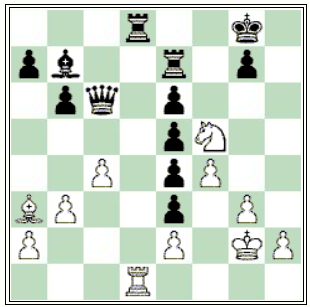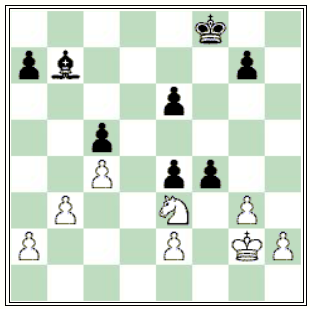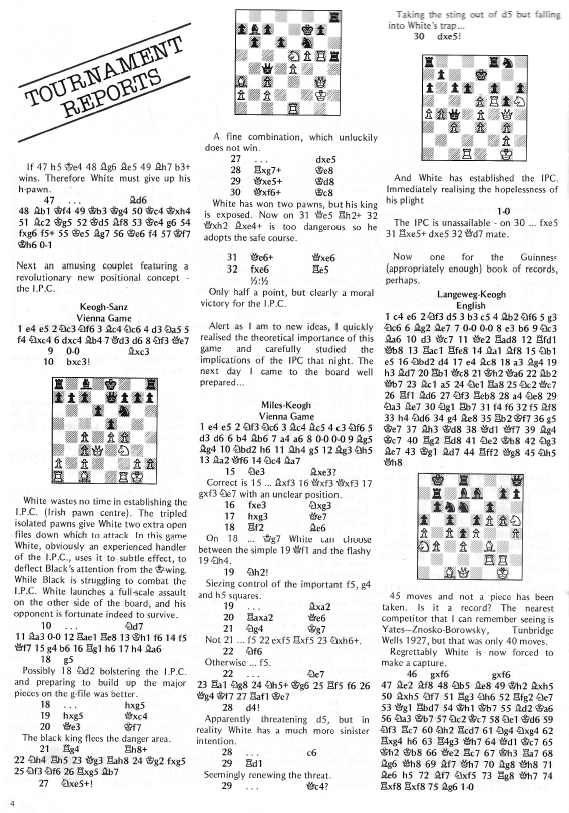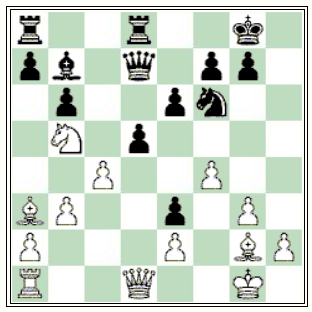English Grandmaster Tony Miles identified “a revolutionary new concept” – the Irish pawn centre (or IPC) – in his report on the 1978 FIDE West European Zonal in Amsterdam. That report appeared in the Number One issue of the short-lived magazine International Chess and Miles used two games featuring the Irish representative Eamon Keogh to illustrate the IPC concept of utilising tripled isolated pawns. [For good measure he also recommended a third game of Keogh’s for the Guinness book of records.]
Miles was a little vague on the full characteristics of the IPC but its motif can be identified as tripled isolated pawns all in a neat little row with a humorous twist that they do not have to be on one of the two central files but can also exist on the adjacent c- or f-files. In an article on chessgames.com, whiteshark claimed that Miles should have termed the structure the Irish Pawn Formation because it can appear anywhere on the board and went on to claim that the “Irish school” was working in secret on a “Four-leaved Clover Formation” featuring quadrupled pawns.
I can however exclusively reveal that the IPC had been seen in exalted Irish chess circles some four decades earlier than the Keogh games and included not just three but four isolated pawns – and on the IPC’s likely debut the pawns were to be found on a true central file.
Thomas Cox [Dublin] -v- John J O’Hanlon [Blackrock]
Armstrong Cup, Board 1, Dublin, 26th November 1938
[Source: Saturday Herald, 12th December 1938]
The report on the game in the Saturday Herald started from the position in the diagram above, with Black standing better.
1.Nd6 Ne4 2.Bxe4 dxe4 3.Qc2 Qc6 4.Rd1 Rd7 5.Qc3 Rad8 6.Qe5 Re7 7.Kg2 f6 8.Nf5 fxe5 [And here O’Hanlon, a nine-time Irish champion, has just unleashed the IPC on Cox, the then current titleholder. Instead 8…Rxd1 would have lost after 9.Nxe7+ Kf7 10.Qh5+ with mate in two.]
[And here O’Hanlon, a nine-time Irish champion, has just unleashed the IPC on Cox, the then current titleholder. Instead 8…Rxd1 would have lost after 9.Nxe7+ Kf7 10.Qh5+ with mate in two.]
9.Nxe7+ Kf7
[Despite Cox’s pyrotechnics, the IPC would probably have emerged victorious after 9…Kh7 10.Rxd8 Qc7 11.Rf8 (or 11.Rd1 exf4) Qd7 when the Queen can infiltrate along the d-file]
10.Rxd8
[According to the Herald report, O’Hanlon had been expecting 10.Nxc6 when 10…Rxd1 would have won for him.]
10…Qc7
[“The only move” – Herald]
11.Rf8+ Kxf8 12.Nd5+ Qc5 13.Bxc5+ bxc5 14.Nxe3 exf4 ½-½ The Herald reported that the game was agreed drawn here. However the match report in the Irish Times for the 28th November 1938 provided a little more detail from which it can be deduced that the game was adjourned here but not resumed, probably because Dublin had already won the match by 4½-2½ with just this game left. If play had continued from the final position 15.gxf4 would have given Cox good winning chances.
The Herald reported that the game was agreed drawn here. However the match report in the Irish Times for the 28th November 1938 provided a little more detail from which it can be deduced that the game was adjourned here but not resumed, probably because Dublin had already won the match by 4½-2½ with just this game left. If play had continued from the final position 15.gxf4 would have given Cox good winning chances.


